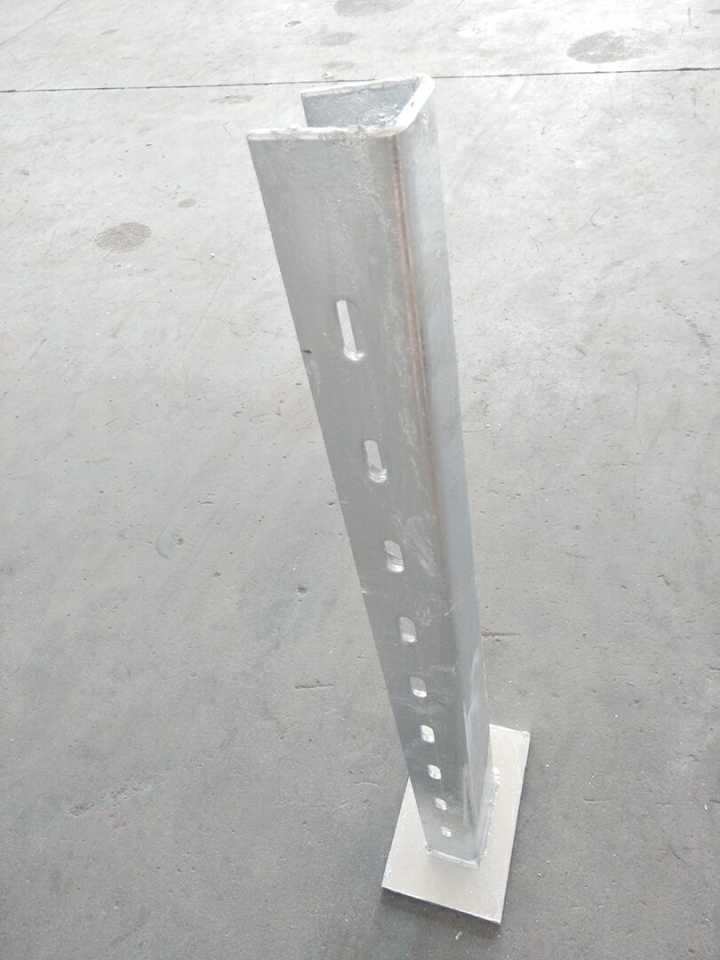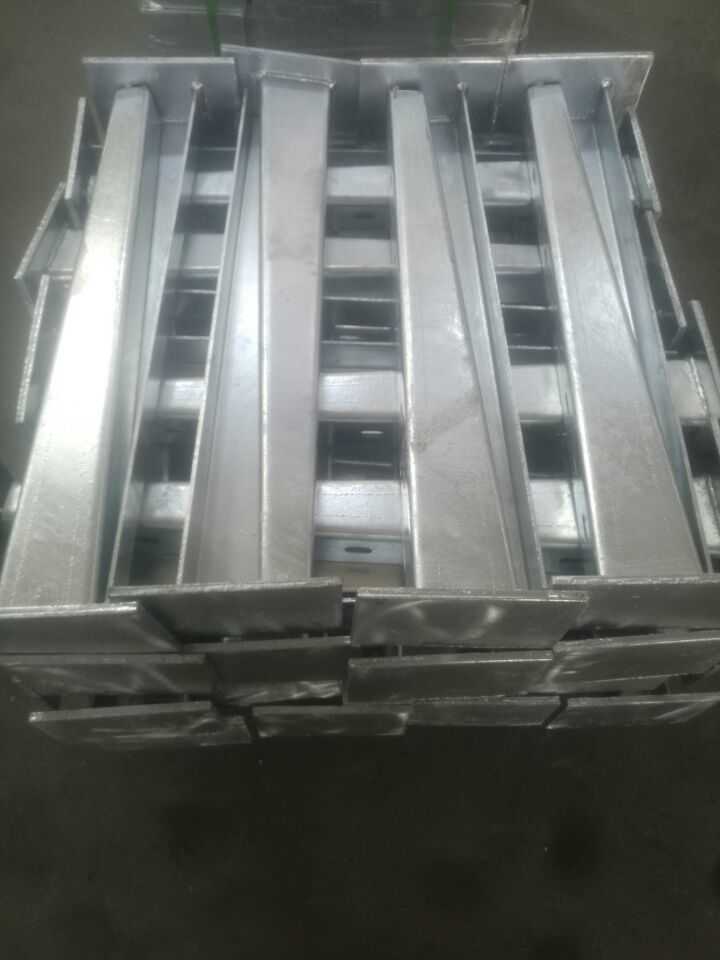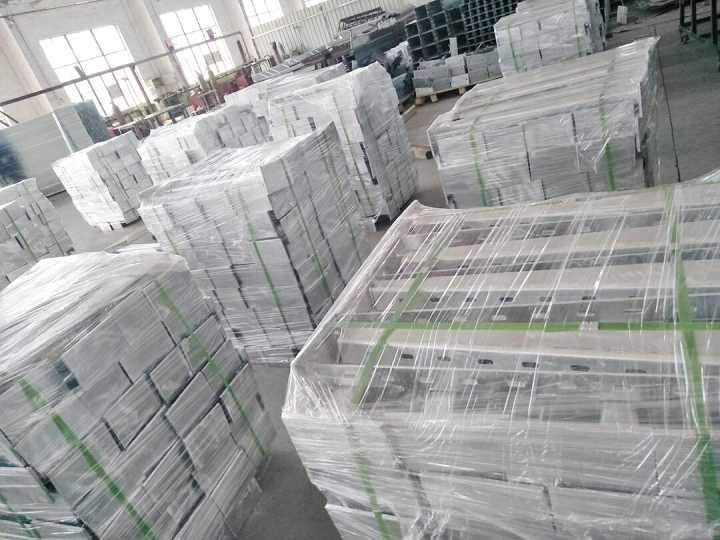With the rapid development of modern aviation manufacturing, CNC machining technology has become one of the key technologies for aircraft manufacturing. The advancement of CNC machining technology has changed the design concept of aircraft, and the design of parts has become more integrated and complicated. At the same time, the change of design concept has also brought new challenges to CNC machining technology. How to high quality, high efficiency and low cost The completion of CNC machining of large parts has become a difficult problem to overcome. The history of aviation manufacturing in developed countries is very long, especially the design and manufacturing technology of large and complex structural parts of aircraft are very mature. With the development of various military and civilian aircrafts in China in recent years, major domestic aviation companies have accumulated a large amount of technical experience in aviation numerical control processing technology, solved a series of key technical problems, and initially formed a representative of large-scale complex structural parts of aircraft. Key technical advantages. However, with the launch of China's large aircraft project, the numerical control machining technology of aviation parts will face greater challenges. Therefore, we still need to conduct in-depth research in the field of CNC machining technology to narrow the gap with Western countries. Foreign aviation parts CNC machining technology In developed countries, the manufacturing process of aviation parts has been highly specialized, informative and automated, without manual intervention, the clamping and positioning process is simple and fast, and the processing efficiency is high. These characteristics are mainly reflected in the following aspects: highly specialized Production resource allocation and layout; universal application of high-speed unmanned processing technology; universal application of high-power and high-efficiency cutting, spindle power utilization rate of more than 70%; universal realization of rapid clamping, pallet exchange and other uninterrupted processing, reducing idle time; Production resources integrated information management is high; complete supporting facilities: including spindle probe, centralized tool magazine, safety protection, aluminum chip processing system, etc.; automatic tool cutting, chip reading and writing mode for tool parameters, tool life management. Development of NC machining technology for aviation parts 1 Form a specialized lean production line based on product characteristics grouping At present, in the large-scale development of aviation parts, they often face a large passive situation and cannot form a core technology advantage with great competitiveness. The fundamental reason is that the original relatively backward production resource allocation and layout cannot meet the current requirements. The need for development, especially the launch of the national large aircraft project, has brought us great opportunities as well as alarming the existing production capacity and manufacturing technology level. First, to establish the concept of a family of parts, a group of techniques is used to build a typical family of parts. Secondly, on the basis of establishing a typical family of parts, the classification establishes a standardized typical part family process flow. Finally, on the basis of the standardized typical part family process, professional and integrated production resource allocation and layout are formed, and finally a lean production line of various typical aviation parts is formed. Especially for large structural parts, it is especially important to establish a specialized production unit for typical parts to improve the level of processing technology and reduce costs. 2 Aiming at fast assembly and forming efficient and reliable clamping technology For high-speed machining of numerical control equipment, it is very important to design the fixture correctly, shorten the production preparation cycle of the fixture, and realize the rapid clamping position of the parts on the CNC machine tool. It can greatly improve the effective cutting time ratio and ensure the processing quality, thus improving the CNC machining. The ultimate goal of efficiency. In the case of traditional clamps, mechanical positioning, manual clamping and disassembly usually take a lot of time and manpower. When machining large workpieces at high speed, semi-automatic or fully automated clamping technology is very economical, hydraulic positioning and Clamping is very effective. The main advantage of the hydraulic clamp is that it saves a lot of time when clamping and unloading the workpiece. The statistics show that hydraulic clamping saves about 90% of the time compared to mechanical clamping, which reduces the production cycle and reduces the cost. Another significant advantage is that the clamping force remains constant during positioning and clamping, ensuring consistent processing quality in the same process. The flexible fixture system is also a new type of clamping system that replaces traditional fixtures. At present, the advanced flexible fixture systems are self-adaptive and can be automatically adjusted for product changes, thus adapting to the situation when the product changes greatly (such as the Airbus-MELT fully automatic flexible clamping system and production line shown in Figure 3). 3 From conventional cutting to high-speed cutting, gradually realize unattended high-speed machining The high performance of modern aircraft requires lightweight, thin-walled and integrated features. Parts must achieve high precision and surface quality. Traditional low-speed machining methods have been difficult to meet the needs of modern aerospace manufacturing. The development and application of a large number of models proves that the high-speed machining technology has great advantages, not only the processing efficiency is greatly improved, but also the processing quality of the parts is improved. At present, there is a big gap between high-speed processing and application in foreign countries. The large-scale high-speed milling equipment with a total performance of 20,000r/min~40000r/min is small, the supporting equipment is lacking, and the technical experience is lacking, which seriously restricts the overall CNC technology level in China. In the future, both the construction of the hardware environment and the research of applied technology require a lot of effort. 4 Realize information management and optimal configuration of tool resources With the increase of product tasks and the increase of equipment, the demand for tools for machining is also increasing, and the variety is increasing. However, for a long time, the tool management mode mainly adopts the manual management mode, the tool management system is not perfect, the tool warehouse is not standardized, and the centralized configuration of the tools is not perfect, which seriously affects the tool management level, increases the preparation time of CNC machining, and restricts The efficiency of CNC machining and the processing capacity are further improved. With the rapid development of CNC machining and tool technology, in the face of the challenges of efficient production and the pressure to continuously reduce manufacturing costs, the management of tools has become a hot topic of concern for manufacturers. The establishment of an automated, information-based tool management storage environment is an effective way to solve the current backward and inefficient status of tool application management. Tool life can be reasonably applied by implanting a chip for full lifecycle management of the tool. 5 Deepen the application research of simulation technology and promote the establishment of digital manufacturing system With the development of computer technology, CNC machining simulation technology has also developed rapidly, especially in the research and development of aviation, aerospace, national defense and other large-scale complex systems. CNC machining simulation reduces losses, saves money, and shortens development cycle. And have played a huge role in improving product quality. The NC machining simulation environment based on VERICUT software realizes the virtual manufacturing of NC programming, which is more realistic and intuitive than the tool position file simulation, which greatly improves the efficiency and quality of NC programming. The text simulation processing technology has become an indispensable part of the CNC machining development process. Especially for large and complex structural parts of aircraft, the materials are expensive, the structure is complex, and a large number of high-speed cutting are used, and the related equipment is extremely expensive. It is essential to ensure the correctness and rationality of the tool path and cutting parameters during the machining process, and to prevent excessive errors such as excessive cutting, collision interference and overtravel. Therefore, it is necessary to establish an accurate and complete simulation processing environment. 6 Breaking through the key technologies of typical large-scale deformation control For CNC machining of aircraft structural parts, due to various product types, complex structures and different processing conditions, CNC machining deformation of parts is the most difficult factor in CNC machining. Machining deformation control is still the main problem that plagues CNC machining. One of the problems. (1) The general method of numerical control machining deformation control. a. The principle of stress release. Full release of internal stress is an effective means to reduce machining distortion. The state of the finite element simulation proves that when the part material appears discontinuous in a certain direction, the internal stress along this direction will not be transmitted, and the internal stress along this direction at the fracture interface is zero. An example of stress relief in a typical aircraft structural member is shown in Figure 5. b. Principle of stress balance. The internal stress cannot be eliminated, and it can only be minimized, or the internal stress should be in an equilibrium state as much as possible. The balanced internal stress makes the part in a "dynamic" stable state and achieve the purpose of controlling deformation. c. Principle of residual compensation. During the machining process, if significant deformation has occurred, the deformation can be reduced in the form of a margin compensation. The measures to control the deformation based on this principle include: correction of the reference surface and the reference hole, and reservation of appropriate finishing allowance. d. Reduce the generation of stress. In addition to the inherent internal stress of the material, the machining process also produces stress, which causes machining deformation. Therefore, it is one of the main control deformation measures to minimize the stress generated during machining. For example, high-speed machining can greatly reduce the generation of stress on the machined surface; improving the cooling effect can also greatly reduce the stress on the machined surface. (2) Numerical control machining deformation simulation technology based on finite element simulation: For the research of CNC machining deformation control of parts, there is still a lack of very effective research methods at home and abroad. In actual production, the CNC machining process is designed based on the accumulation of technical experience and trial and error. There are great uncertain factors. And development risks. The finite element simulation cutting analysis technology is one of the effective techniques for studying the deformation of CNC machining. The finite element simulation machining deformation simulation technology enables the numerical simulation technology to simulate the machining process before machining, analyzes the machining process, determines the influence of various parameters on the deformation of the part, and predicts the deformation and rupture of the complex parts during the machining process. Design and process technicians provide the basis for design and process analysis. 7 Promote the application of cutting parameter optimization technology to achieve standardized application of cutting parameters Reasonable cutting parameters are the premise of high-speed and high-efficiency machining by CNC machining, and also a necessary condition for realizing high-speed unmanned machining. At present, the basic cutting optimization techniques include: cutting optimization technology based on dynamic simulation, cutting parameter optimization based on superior milling technology and optimization technology based on geometric simulation cutting, which have their own application advantages and characteristics. (1) Cutting optimization technology based on dynamics simulation. Based on dynamic simulation, the cutting optimization is based on the physical characteristics of the cutting system. The basic principle is to test the dynamic characteristics of the machine tool processing system and obtain the natural frequency, damping ratio, modal stiffness and other parameters, and then use the machining dynamics simulation system to simulate the flutter stability domain to obtain the flutter stability domain simulation. Curve; finally, according to the flutter stability domain simulation curve, combined with the workpiece characteristics to select reasonable cutting parameters. (2) Optimization of cutting parameters based on the excellent milling technology (OPTIMILL). Utilizing technology is an application system that uses adaptive control technology. By performing real-time monitoring of the load/power on each machine spindle, the cutting process is controlled in real time with optimal feed rate calculations and with the calculated optimal feed rate. The excellent milling technology requires multiple optimizations for each part, and the optimized results are only valid for the part. (3) Optimization technology based on geometric simulation cutting. The geometric simulation-based cutting optimization is an optimization measure for automatically adjusting the feed rate for the cutting conditions and the real-time changes of the amount of material to be cut during the cutting process. It can improve the machining efficiency and improve the cutting process to some extent. The basic principle is that the tool's real-time material removal rate and the tool's forward direction are optimized. When cutting a large amount of material, the tool feed rate is reduced. When cutting a small amount of material, the feed rate is correspondingly increased to maintain the relative balance of the machine load and cutting. stable. These three optimization techniques have their own characteristics and advantages in practical applications, but they also have certain limitations. Combining them can achieve better results. At the same time, on the basis of this, by establishing a typical cutting parameter library, it is possible to standardize the parameters of cutting of similar parts. Conclusion Entering the 21st century, China's aviation manufacturing industry faces the historical opportunity of large aircraft development, and it is also facing fierce competition in the market. Accelerating the efficient manufacturing technology with CNC technology as the core will be the key link to solve the sustainable development of the manufacturing industry.
Established in 1996, YangZhong HuaXin Power Equipment Co., LTD is a professional manufacturer and exporter that is concerned with the design, development and production of power equipment .We are located in Yangzhong city, Jiangsu province, with convenient transportation access.
Huaxin power PIPE Brackets
I style
The brackets are designed for holding the pipe,the size can be adjustable for the demand.
Features:
Mounting style:
Material:Galvanized steel is available
Finish:Hot-galvanized coating,thickness: 85um
Pipe Brackets,Copper Pipe Bracket,Pipe Hanger Yangzhong Huaxin Power Equipment Co.,Ltd , http://www.huaxinbusbarchina.com
We specialize in Cable Tray, high-low voltage bus ways, bus switch cabinet, conduct bar, pine line armature, integrated wiring and so on. All of our products comply with international quality standards and are greatly appreciated in a variety of different markets throughout the world.




